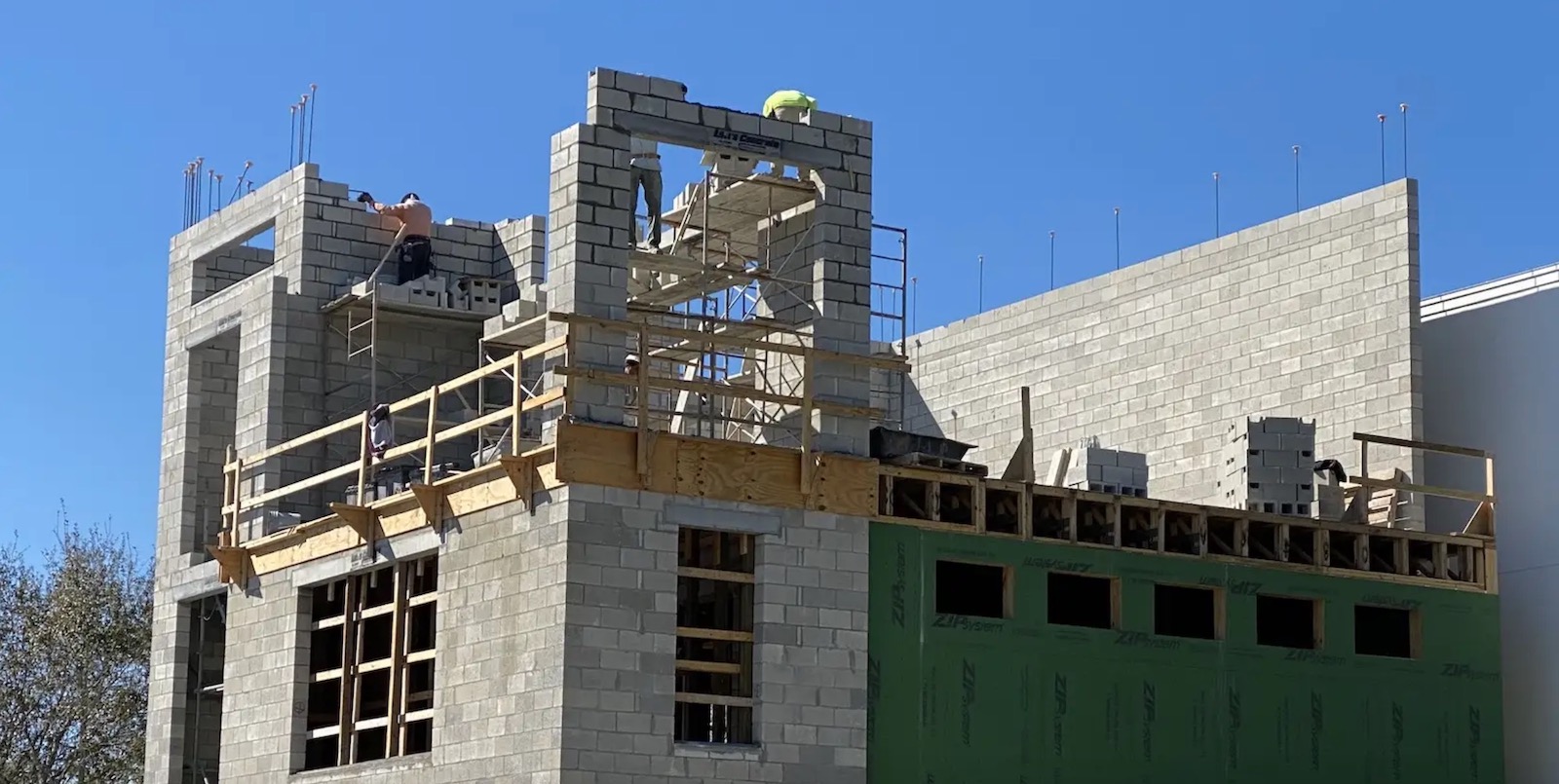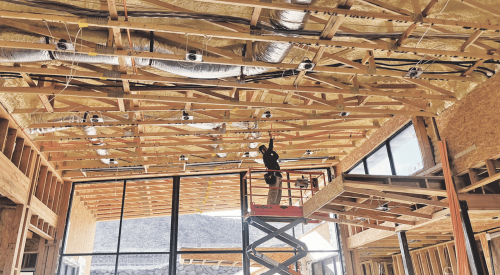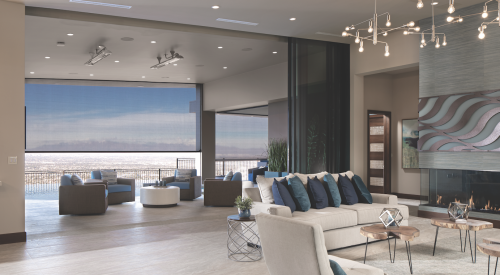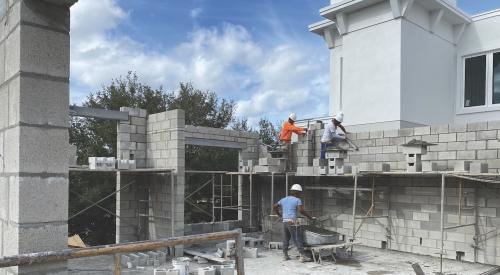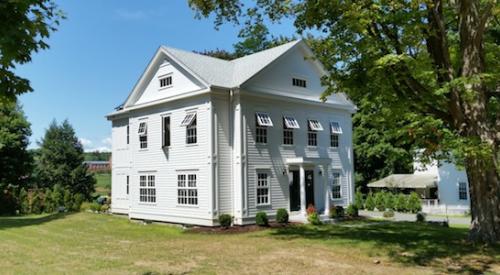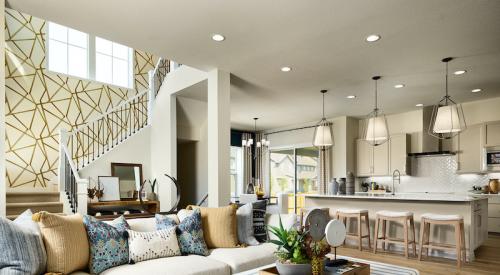The New American Home 2021, built annually in the host city of the International Builders' Show, is not only a beautiful home in the heart of downtown Winter Park, Fla., just outside of Orlando, but showcases significant energy, water, and resource efficiencies that deliver comfort, indoor health, and convenience to its owners.
With that, the 4,390-square-foot house achieved the highest levels of certification from a who's who of green building programs, most notably the National Green Building Standard (NGBS), Energy Star, and the Environmental Protection Agency's Indoor airPLUS program. It also earned a Home Energy Rating System (HERS) index score of 50 (meaning, The New American Home 2021 is 50% more efficient than a comparably sized, code-compliant new home). When we added a 13.2 kW photovoltaic (PV) system to the roof, the HERS score dropped to a remarkable -14.
Achieving that kind of energy efficiency and earning certification from any green building program can seem daunting and challenging, but The New American Home (TNAH) has the added pressure of being built under a public microscope, so there was no room for error.
In this case, the home was modeled in its design phase to achieve at least baseline NGBS certification, but from there, architect-builder Phil Kean and his team at Phil Kean Design Group (PKDG) worked with trade partners, suppliers, and our firm, Two Trails, to optimize construction details and specifications to the highest levels. Case in point: Adjusting the framing plan to enable shorter duct runs and running energy models to verify the respective performance values of the windows and cooling system.
RELATED
- Sign of the Times: The New American Home 2021
- The Products Behind the Finishes in The New American Home 2021
- How We Built The New American Home 2021
With this home, and all of our clients' projects, Two Trails takes a methodical approach to high performance. Every feature and step of the process is planned to the last detail. The key is getting all that "thought" work done up front, establishing and relying on a true "team" approach among all of the stakeholders, and taking 80% of the green project administration paperwork off the builder's plate so they can do what they do best: build a high-quality home.
Benefits of a Systems-Engineering Approach
When building The New American Home each year, the project team takes a systems-engineering approach to unite segments of the building industry that commonly work independently. This collaboration enables the builder to incorporate energy and material efficiencies from design through construction, and the process of analysis, field implementation, reanalysis, and design alteration facilitates the ultimate home performance. That process is just as applicable for custom/luxury homes such as TNAH 2021, as it is for production or community-scale housing.
The project involved evaluating the home's design and the builder's business and construction practices with its partners to identify cost savings that could then be reinvested to further improve energy performance and product quality.
For TNAH 2021, the team analyzed and selected cost-effective strategies for improving home performance. We also evaluated the home's design and the builder's business and construction practices with its partners to identify cost savings that could be reinvested to further improve energy performance and product quality. For example, new techniques for tightening the building envelope enabled the PKDG team to install smaller, yet more efficient, heating and cooling systems.
Understanding the interaction between each component in the home is paramount to a systems-engineering approach. Throughout design and construction, the relationship between building site, envelope, mechanical systems, and other factors is carefully considered. Recognizing that features of one component can dramatically affect the performance of others, this discipline enabled PKDG to value-engineer energy-saving strategies at little or no extra cost.
The New American Home 2021 Energy-Efficiency Highlights
Thermal Shell
- Unvented and air-sealed attic insulated with open-cell polyurethane spray-foam insulation to achieve an R-19 thermal value (see photo, below).
- Vinyl-frame windows with low-E coating and an argon gas fill rated at U-0.25 and SHGC-0.21 limit solar heat gain and optimize air tightness. The patio doors are rated at U-0.33 and SHGC-0.17.
- Perimeter walls insulated using a combination of highly efficient products, including injected core-fill foam insulation (R-8 average) in all open cells of the CMU (concrete masonry unit) walls, open-cell polyurethane spray-foam insulation (R-3.5 average per inch), and reflective wall insulation (R-4.1) on interior wall surfaces.
- Aerosol thermal envelope sealer used to further reduce envelope leakage, resulting in an extremely low envelope leakage rate of 2.29 ACH (air changes per hour).
- Motorized retractable screens along the home's terraces provide fresh air, shade from the sun, climate control, protection from insects, and privacy.
- The light-colored exterior walls and roof help to reflect the sun's heat and reduce its impact on interior spaces.
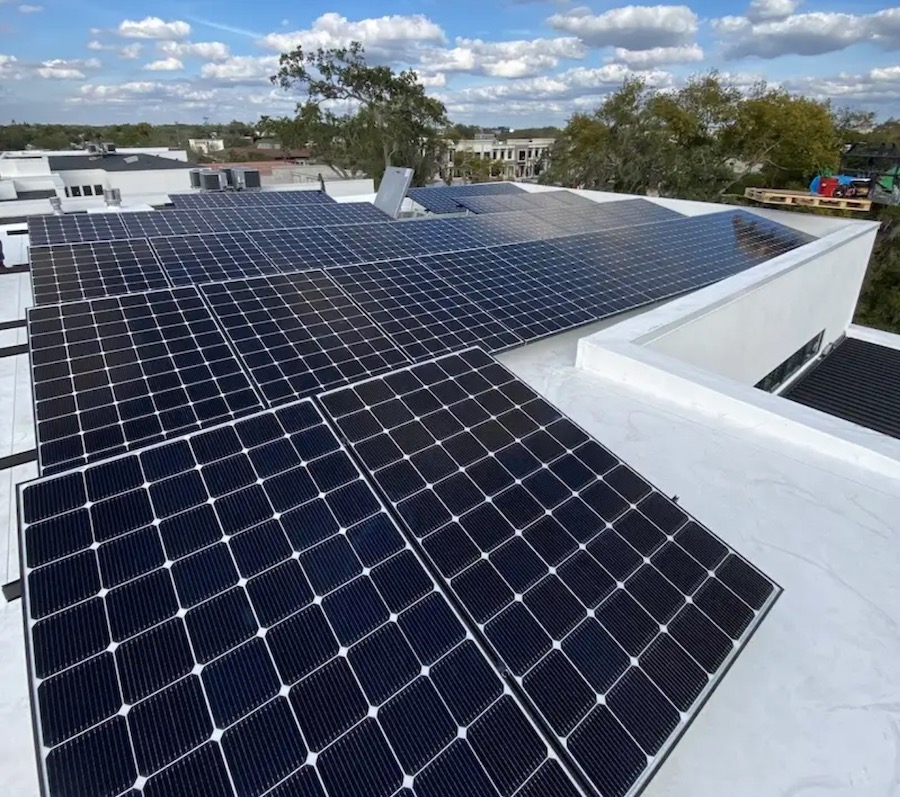
HVAC
- Space conditioning provided by Mitsubishi’s M-Series and P-Series multi-indoor ducted variable refrigerant flow (VRF) heat-pump HVAC system, with an efficiency rating of 16 SEER and 9 HSPF (heating seasonal performance factor). Note: HSPF measures heat pump efficiency in heating mode; SEER measures heat pump efficiency in cooling mode.
- Space conditioning system located entirely within the conditioned space, minimizing any conditioned air leaking to the exterior.
- Mechanical ventilation and ERV (energy recovery ventilator) provided by Panasonic (see photo, below).
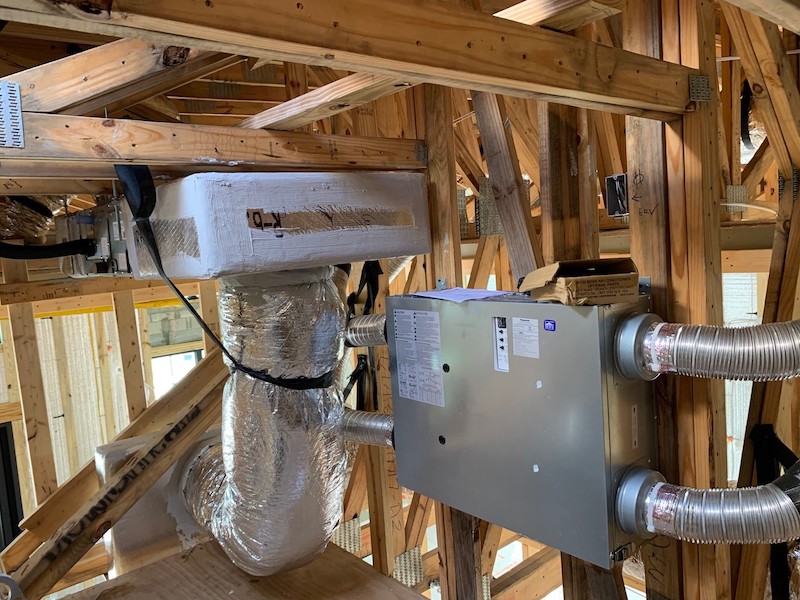
Water Heaters
- Energy Star-qualified tankless water heaters with 96% thermal efficiency (0.96 EF), combined with on-demand hot-water recirculating pumps used throughout the project, reduce heat loss and maximize efficiency.
Electrical
The New American Home 2021 features:
- 100% energy-efficient LED lighting for all interior and exterior lighting.
- Personalized smart home living, automation, and security.
- Energy Star-qualified appliances.
- An electric vehicle (EV) charging station.
- A 24 kW backup generator that delivers power directly to the home’s electrical system during power outages.
RELATED
- For Better Indoor Air Quality: Build Tight and Ventilate Right
- 9 Housewraps That Block Air But Allow Water Vapor to Escape
- Study Reveals Cost Effectiveness of Solar Panels
- Building Envelope Solutions for Moisture Management
Solar Array
- A rooftop array of 40, 330-watt solar panels provides 13.2 kW of clean, renewable energy.
Water Efficiency Features
In addition to energy savings, TNAH 2021 is designed to achieve an estimated 50% reduction from baseline water use. This remarkable reduction is made possible by using low-flow water fixtures, natural indigenous landscaping, and a highly efficient irrigation system. Water-saving features include:
- EPA WaterSense-certified 1.5 gpm (gallons per minute) lavatory faucets and toilets with an average of 1.28 gpf (gallons per flush) contribute to indoor water use reduction.
- Highly efficient micro-spray and drip lines, with an irrigation controller, contribute to reduced outdoor water use.
Indoor Environmental Quality Features
Indoor environmental quality encompasses the conditions inside a home and their effects on residents. The New American Home 2021 incorporates innovative strategies, creating indoor environmental quality that enhances the lives of homeowners, protects occupant health, and improves quality of life. Indoor environmental quality strategies include:
- Low-VOC paints and finishes and low-VOC interior adhesives and sealants.
- MERV-13 space-conditioning air filters.
- HVAC ducts sealed during construction to prevent pollutants from construction activities entering the system.
- Whole-building ventilation system configured to allow the correct amount of fresh air into the home.
- Cabinets that are formaldehyde-free and built with materials certified by the Forest Stewardship Council.

Drew Smith is the COO of Two Trails, a company focused on sustainable building consulting. He has been involved in sustainable building for more than 15 years and is certified or accredited by Home Innovation Research Labs, the U.S. Green Building Council, RESNET, and the Florida Green Building Coalition, among several others.
